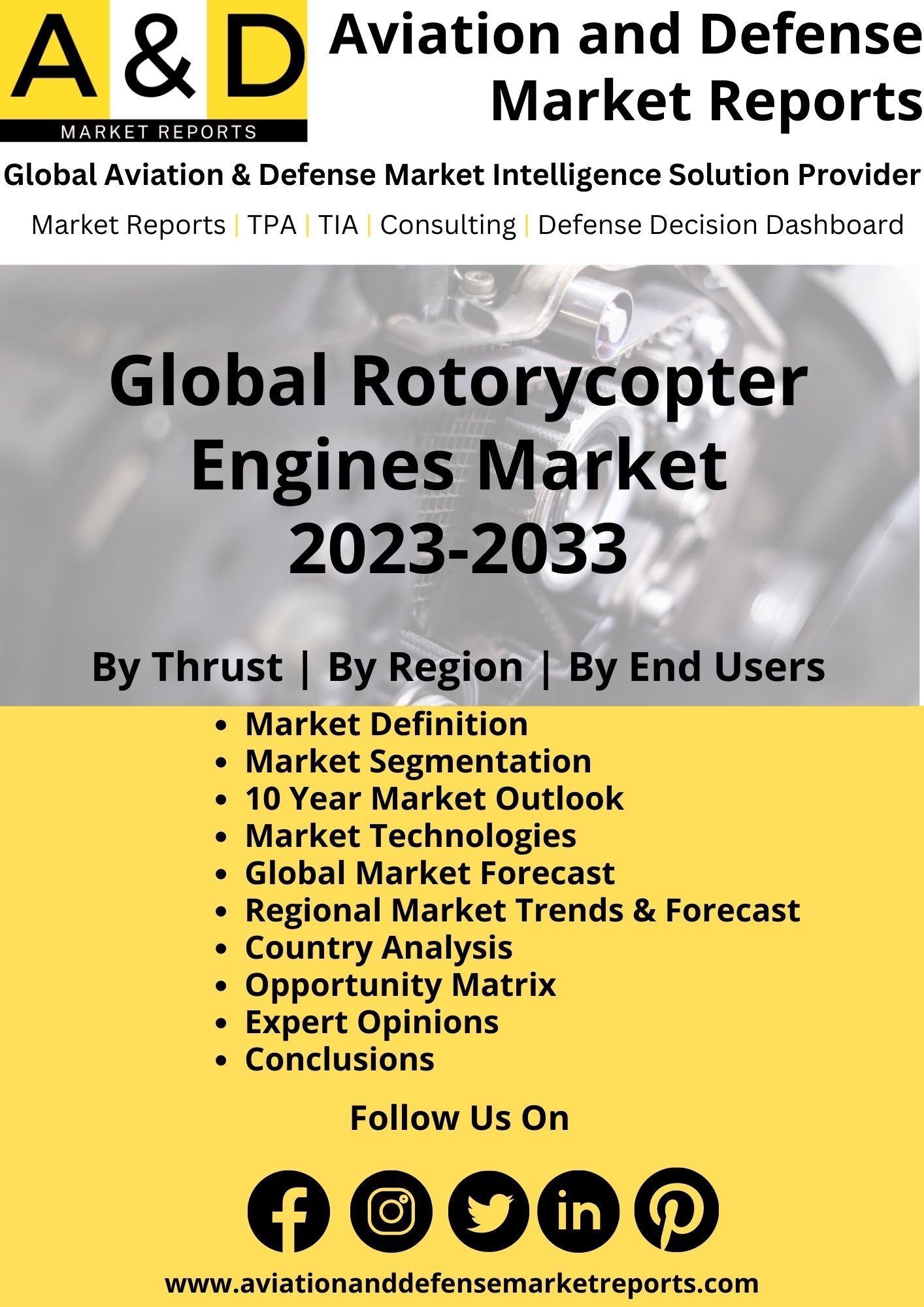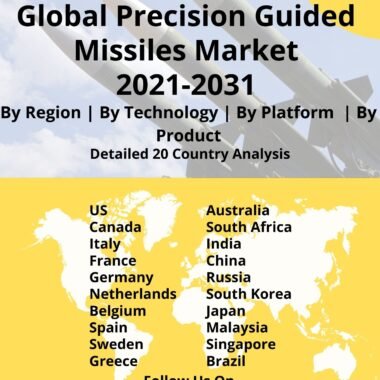Description
Rotorcraft Engine Market
Frequently Asked Questions of Rotorcraft Engine Market
Helicopters use various types of engines to generate power and provide propulsion. The choice of engine depends on factors such as the helicopter’s size, purpose, and performance requirements
Also known as turboshaft engines, turbines are the most common type of engines found in modern helicopters. Turbine engines offer high power-to-weight ratios, reliability, and excellent performance at high altitudes. They work by burning fuel in a combustion chamber to produce hot exhaust gases, which drive a turbine that generates shaft power. This shaft power is used to drive the helicopter’s rotor system. Turbine engines provide the necessary power for vertical takeoff, hover, and forward flight. Some smaller helicopters, particularly those used for training, recreational flying, or light utility missions, are powered by piston engines. These engines operate on the same principles as those found in cars and typically use aviation-grade gasoline or avgas. Piston engines tend to be less powerful than turbine engines but are more fuel-efficient in certain flight regimes. They are also less expensive to maintain and overhaul compared to turbines. Piston-powered helicopters may have one or multiple piston engines, depending on their design.
Radial engines are a specific type of piston engine configuration in which cylinders are arranged in a circular pattern around a central crankshaft. While less common in modern helicopters, radial engines were prevalent in early helicopter designs and some vintage or replica helicopters. They offer a distinctive sound and visual appearance. Radial engines are known for their reliability and ability to produce high torque at low rotational speeds, making them suitable for certain applications.
With the growing interest in electric propulsion, there have been developments in hybrid and electric engines for helicopters. These engines combine traditional combustion engines with electric motors or use fully electric systems. Electric propulsion offers benefits such as reduced emissions, lower noise levels, and potentially lower operating costs. However, electric propulsion for helicopters is still in its early stages, and widespread adoption is yet to be realized.
Major factors driving Rotorcraft Engine Market Growth
The demand for helicopter engines is often correlated with the overall growth of the aviation industry. As economies develop and air transportation becomes more accessible, there is an increased need for helicopters in various sectors such as emergency medical services, search and rescue, tourism, law enforcement, offshore operations, and corporate transport. This Rotorcraft Engine market growth in helicopter applications can contribute to an increased demand for helicopter engines.
Helicopters play a crucial role in military operations for tasks like reconnaissance, troop transport, combat support, and anti-submarine warfare. As defense budgets evolve and countries update their helicopter fleets, there may be an increased demand for engines that offer improved performance, efficiency, and reliability to meet military requirements.
Trends Influencing the Rotorcraft Engine Market Size
Advances in engine technology can drive demand as new engines offer improved fuel efficiency, reduced emissions, enhanced power output, and better reliability. Engine manufacturers continually invest in research and development to introduce innovations that enhance performance and address the specific needs of helicopter operators. These advancements can generate demand as operators seek to upgrade their existing engines or invest in new helicopter models equipped with the latest engine technology.
Rotorcraft Engine Market Forecast & Dynamics
The demand for helicopter engines can vary across different regions based on economic conditions, infrastructure development, government policies, and specific industry requirements. Emerging markets, in particular, may experience increased demand for helicopter engines as they expand their aviation capabilities and invest in helicopter fleets to support various sectors such as tourism, emergency services, and transportation.
The Rotorcraft Engine market forecast includes a comprehensive Rotorcraft Engine market analysis and Rotorcraft Engine market size. The market analysis includes regional market size, drivers, restraints, and opportunities. The regional analysis also includes country-wise market size.
Rotorcraft Engine Market Analysis for Recent Developments
Airbus Helicopters’ latest iteration, the H145 light twin turbine helicopter, is gaining favor with air ambulance, search and rescue, and police operators in Europe, particularly where high/hot concerns figure into mission planning. The five-blade H145D3 was announced in 2019 and EASA-certified in 2020. It has a revolutionary bearing less main rotor design that gives a smoother ride, requires less maintenance, and boosts usable load by 330 pounds over the four-bladed H145D2. The European certification includes single-pilot IFR operations, single-engine category A/VTOL capabilities, and night vision capability. The H145 is the only helicopter in its class that can take off and land at 20,000 feet.
Dorset and Somerset Air Ambulance, which is headquartered on the edge of Wellington, is celebrating winning a share of a £1 million fund. The money was put up by the Benefact Group who are donating one million pounds to charity for the fifth year in a row as part of its Movement for Good awards. The Air Ambulance, which relies on donations to operate, were awarded £1,000.
The global rotorcraft engine landscape has experienced significant advancements, transforming the capabilities of helicopters and other rotary-wing aircraft. Technological innovations in rotorcraft engines have focused on improving efficiency, performance, and environmental sustainability. Advancements in engine design, materials, and manufacturing processes have resulted in more powerful and lightweight rotorcraft engines. Enhanced power-to-weight ratios contribute to increased payload capacity, range, and overall mission flexibility for a variety of applications, including military, commercial, and emergency services.
The integration of digital engine control systems and advanced diagnostics has improved the reliability and maintenance efficiency of rotorcraft engines. These technologies optimize performance, reduce downtime, and enhance the safety of rotary-wing operations. Efforts to address environmental concerns have led to the development of more fuel-efficient and environmentally friendly rotorcraft engines. Research into alternative fuels and hybrid-electric propulsion systems aims to reduce emissions and increase the sustainability of rotorcraft operations. Global collaboration and standardization efforts ensure interoperability and compatibility across different rotorcraft platforms, fostering a more efficient and versatile rotorcraft ecosystem. In summary, the advancements in global rotorcraft engines in 2023 signify a commitment to elevating the performance, sustainability, and safety standards of rotary-wing aircraft across diverse applications.





